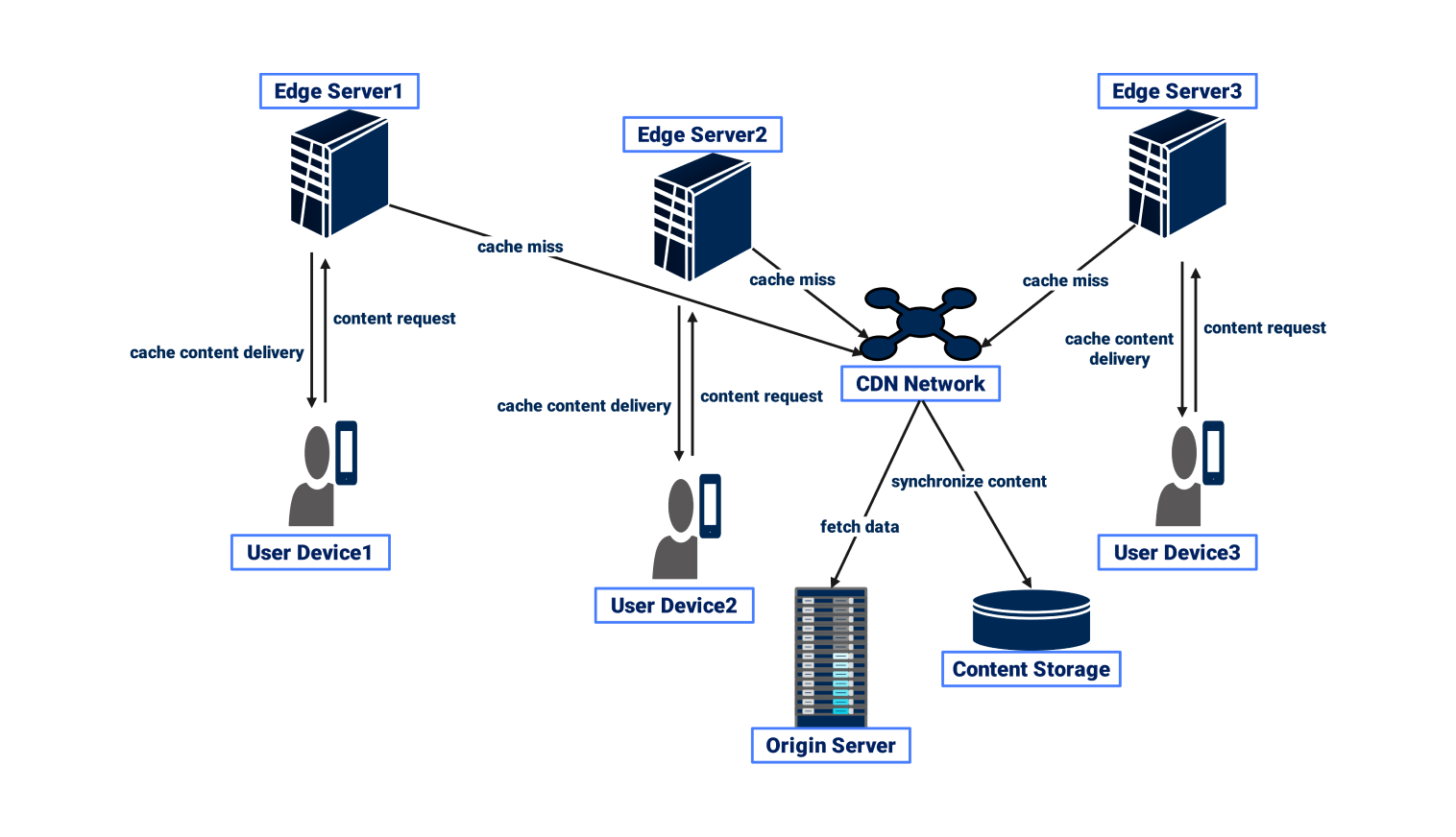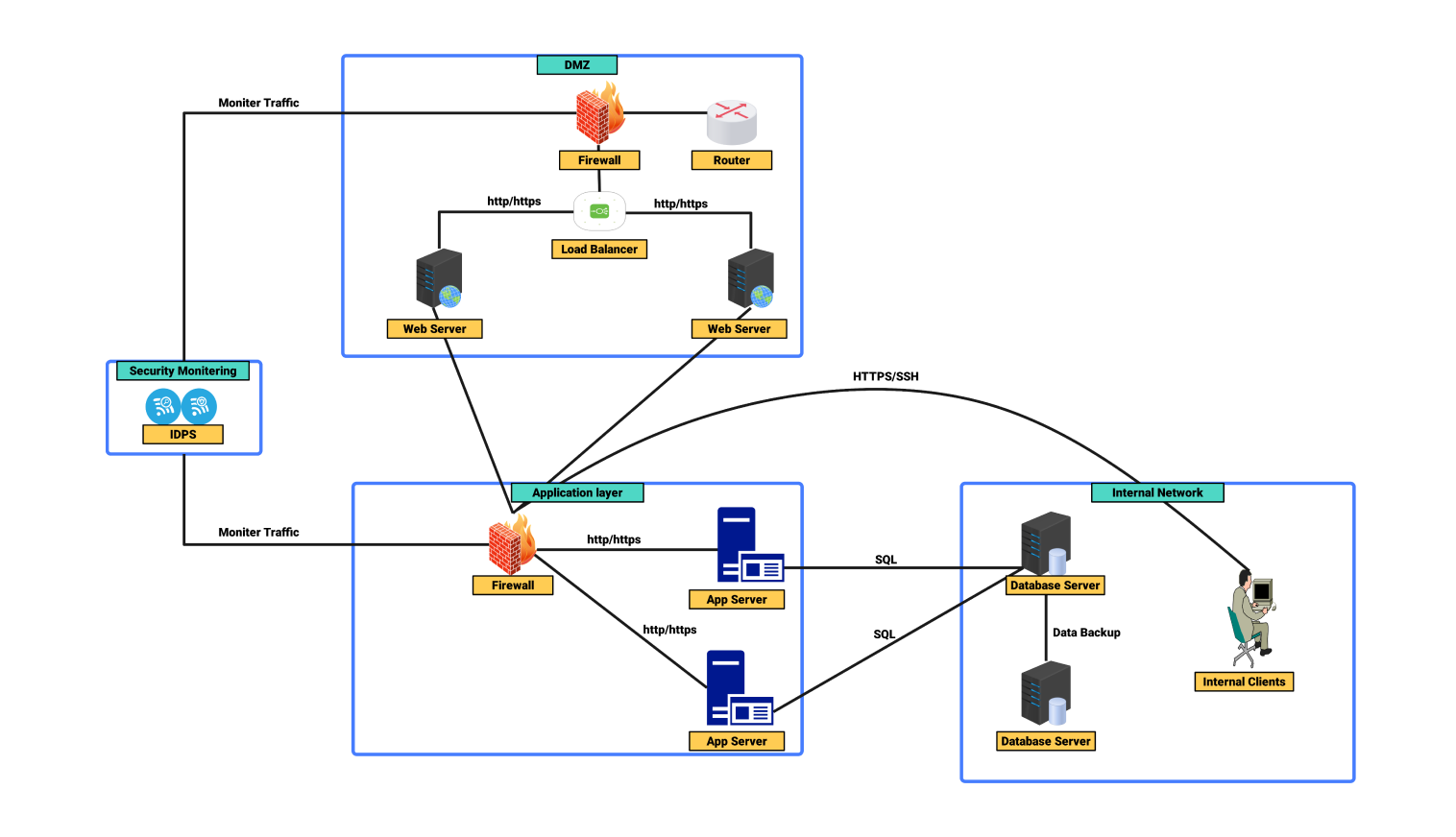- All templates
- Network diagram templates
- Network diagram content delivery
About this network diagram for content delivery
The network diagram for the content delivery network (CDN) is structured, in terms of its users, edge servers, and core. It clearly explains the functionality of a CDN's efficient content delivery in fewer periods. The arrangement of the tripod shows that CDN is a large-scale dispersion system, limiting the transport delays of the users’ requests by utilizing edge cache server nodes located close to the users.
In the upper part, the diagram consists of many edge servers ( edge server 1, edge server 2, edge server 3,… and so forth) that are spaced out economically. These servers serve to manage access by the users and provide stored data when needed. The line between the edge servers and the user devices (user devices 1, 2, and 3) symbolizes the content transfer by the nearest edge server to the devices. This results in low latency.
When content is requested by a user, it is up to the edge server to seek that content out in its database’s cache. In such a situation, the content in question is redirected to the user. This situation is illustrated with the ‘cache content delivery’ arrows.
If a cache miss occurs, it means the edge server's cache does not store a specific piece of content. An entirely different course of action is then taken. The content request is sent to the CDN network. The CDN network is the top control layer. It coordinates all requests for information and the responses to them.
At the bottom of the illustration, the origin server and the content storage components are depicted. These components constitute the basis of the content in the CDN network. Whenever the network of CDN is trying to obtain some content due to a cache miss, it reaches out to the origin server for the required content.
The origin server and content storage ensure the availability of requested content. They must also update it with the CDN network before sending it to the edge servers.
The network diagram for the CDN network depicts the two-way process whereby content is retrieved, stored, and served to the end user. It explains that edge servers exist to spare the origin server. They do this by using stored data to respond to local requests. This improves service delivery.
Related templates
Get started with EdrawMax today
Create 210 types of diagrams online for free.
Draw a diagram free Draw a diagram free Draw a diagram free Draw a diagram free Draw a diagram free








